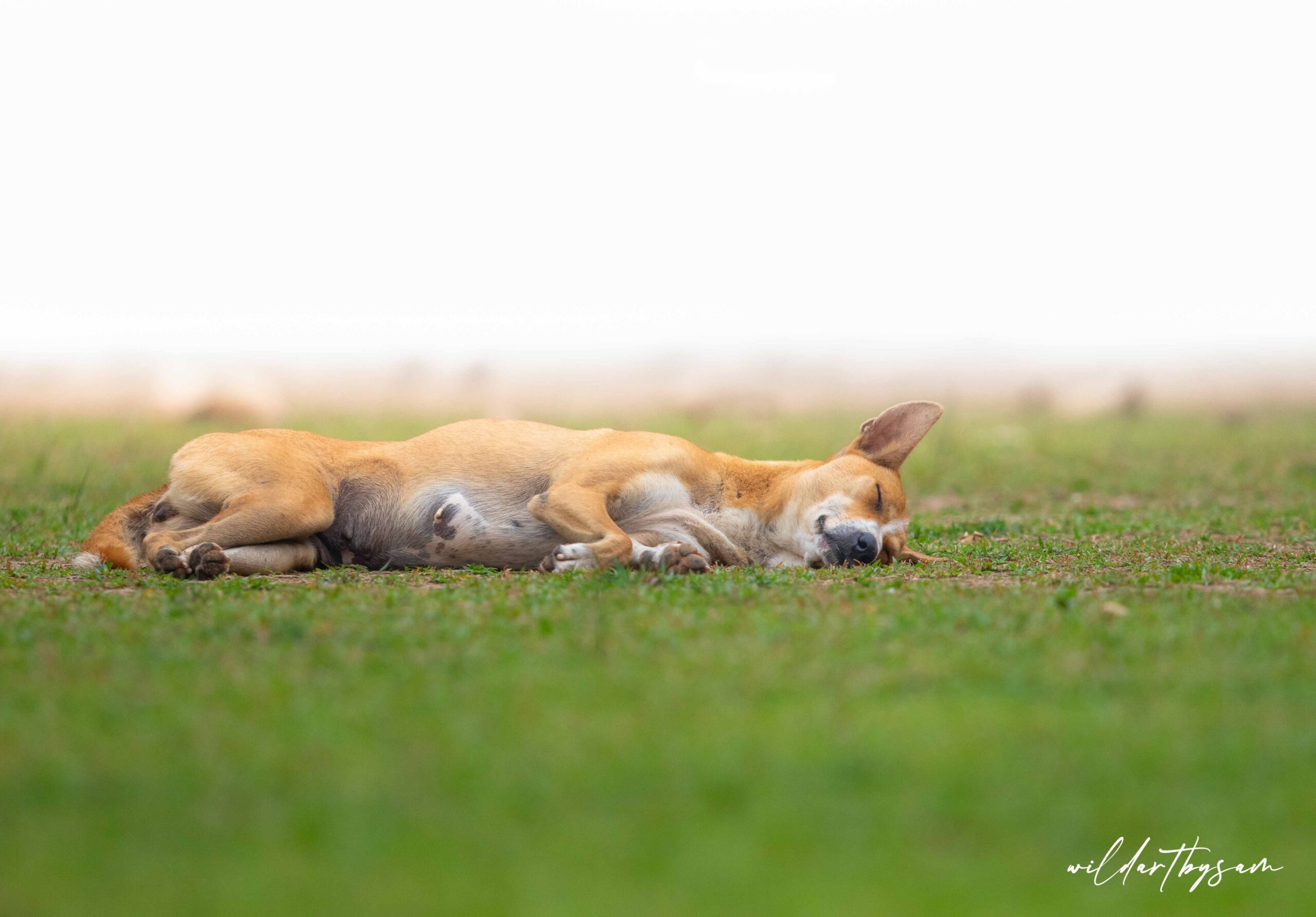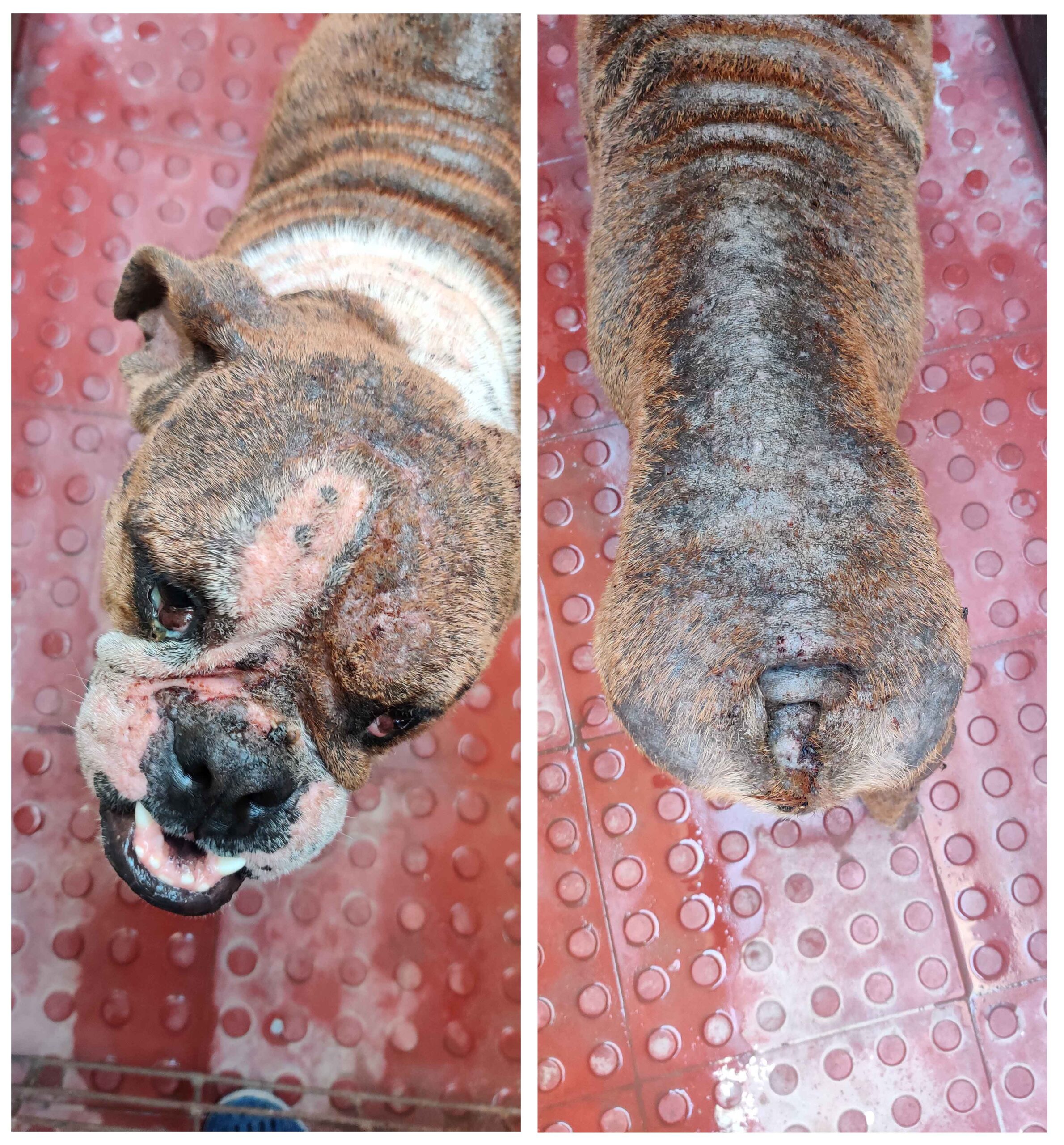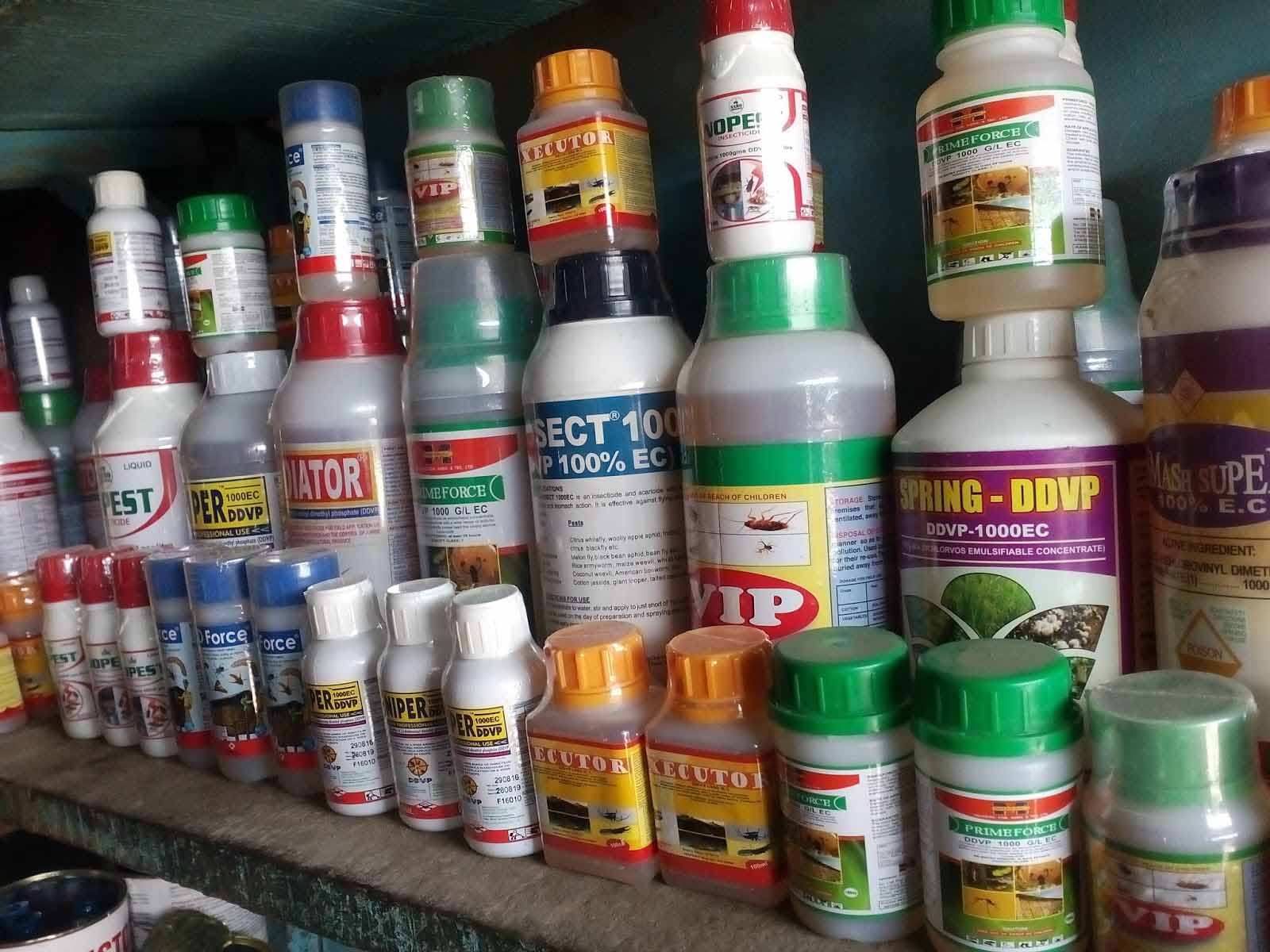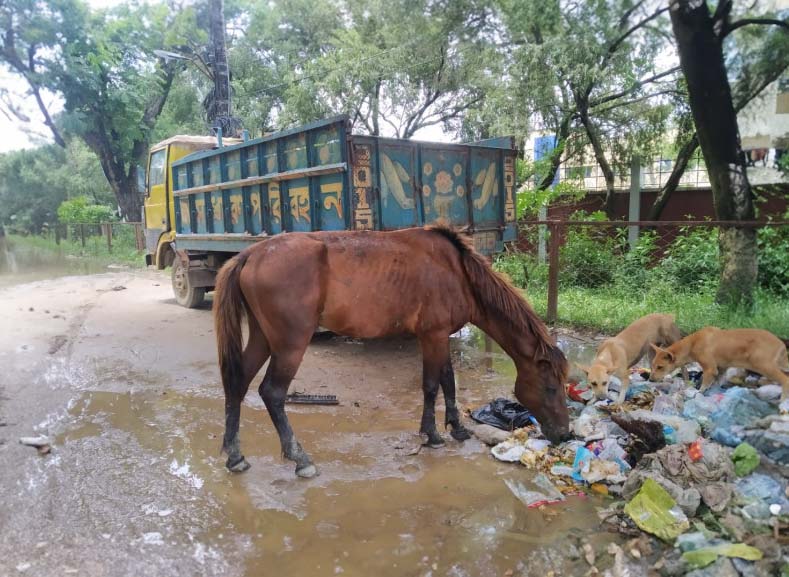When Death Lurks Nearby: How the Menace of Harmful Substances Imperils the Lives of Stray Animals

Photo by wildartbysam
Introduction
Stray Animals and wildlife constantly face numerous challenges in their daily lives, leaving them vulnerable to various dangers. We must recognize the importance of protecting these innocent creatures who share our environment. By understanding the risks and implementing preventive measures, we can help ensure their safety and well-being.
The Threat of Sharp Objects in the Garbage

A. Understanding the risk of blades, syringes, and sharp objects
Discarded blades, syringes, and other sharp objects pose a significant danger to Stray Animals and wildlife. These hazardous items often find their way into the garbage, where they can accidentally injure unsuspecting creatures searching for food or shelter.
B. How Stray Animals and wildlife are affected
When Stray Animals rummage through garbage bins for sustenance, they may unknowingly encounter these sharp objects. Injuries from cuts, punctures, or even needle sticks can lead to severe infections, internal damage, and, in some cases, even death. The lack of medical attention and proper care further exacerbates their suffering.
C. Steps to prevent harm to Stray Animals
We must adopt responsible waste disposal practices to protect Stray Animals and wildlife from this peril. Ensuring sharp objects are securely wrapped or enclosed within sturdy containers can reduce the risk of accidental injuries. Educating communities about the potential dangers of improper garbage disposal is also essential.
Hidden Dangers in the Environment
A. Blood and the risks it poses
The presence of Blood in our environment can turn into a silent menace for stray animals and wildlife. The transmission of bloodborne pathogens through open wounds, contaminated food, or interaction with infected animals can have devastating consequences for their health. Stricter regulations on controlling and managing blood waste can help mitigate these dangers.
B. Accidents and their impact on Stray Animals and wildlife
Human-generated and natural accidents can cause immense harm to stray animals and wildlife. Collisions with vehicles, entrapment in artificial structures, or injuries resulting from natural disasters such as floods or fires can all jeopardize their lives. Education and increased vigilance can go a long way in minimizing these threats.
C. The danger of poison and chemical exposure
Exposure to hazardous substances, including toxins and chemicals, poses a severe risk to stray animals and wildlife. Accidental ingestion or contact with poisonous substances, such as pesticides or cleaning agents, can lead to organ failure, neurological damage, or even death. Raising awareness about the proper use and disposal of chemicals is crucial in protecting these vulnerable creatures.
Medications and Skincare Products: Unseen Hazards
A. Stray Animals and the dangers of consuming medicine
Stray animals often scavenge for food in discarded containers, which sometimes include medication. Ingesting these medications, especially those not intended for animal use, can result in adverse reactions and toxicity. Properly disposing of unused drugs and keeping them out of reach of stray animals can prevent such incidents.
B. Negative effects of chemicals on their health
Skincare products like lotions or creams may contain harmful ingredients that can harm Stray Animals’ skin, fur, or overall health. Exposure can cause severe allergic reactions, rashes, or irritation. Prioritizing animal-friendly and non-toxic products is crucial in safeguarding their well-being.
C. Awareness and prevention measures
Raising awareness about the potential risks associated with careless disposal of medications and skincare products is essential. Encouraging responsible pet ownership and promoting safe and natural alternatives can help reduce these unseen hazards.
Zoonotic Skin Diseases and Transmission

A. Stray Animals as carriers of contagious skin diseases
Stray Animals are at a higher risk of contracting and transmitting zoonotic skin diseases, which can be passed between animals and humans. Conditions such as mange, ringworm, or scabies not only cause immense suffering but can also pose a threat to public health. Regular veterinary care, vaccination programs, and proper hygiene practices are essential in controlling the spread of these diseases.
B. The risks of human and Stray Animals interaction
Unprotected contact with Stray Animals suffering from contagious skin diseases increases the transmission probability. Scratches, bites, or proximity to infected animals can all facilitate the spread of these ailments. Educating the public about the importance of avoiding direct contact and practicing good personal hygiene is critical for preventing the transmission of zoonotic skin diseases.
C. Preventive measures and proper hygiene practices
By promoting responsible pet ownership, including regular veterinary check-ups, vaccinations, and proper hygiene practices, we can significantly reduce the occurrence and transmission of zoonotic skin diseases. Encouraging individuals to report suspected cases and seeking prompt medical attention can help prevent further outbreaks.
The Menace of Rabid Dogs
A. Stray dogs and the threat of rabies
Rabies, a highly contagious and deadly viral disease, poses a significant threat to stray dogs and other animals. Strays infected with rabies may exhibit aggressive behavior, putting humans and wildlife at risk. Vaccinating homeless animals and promoting responsible pet ownership are essential steps in combating the menace of rabid dogs.
B. Effect on local human and stray animal populations
The presence of rabid dogs endangers stray animals and severely threatens public health. Bites and scratches from rabid animals can lead to the transmission of the virus to humans and other animals. Implementing comprehensive education programs and effective vaccination campaigns is crucial in safeguarding the local human and animal populations.
C. Vaccinations and control strategies
Increasing access to affordable vaccinations for stray animals is vital in controlling the spread of rabies. Partnering with local animal control agencies, veterinary clinics, and community organizations can help implement targeted vaccination programs. Effective spaying and neutering initiatives can help manage stray populations, reducing the risk of rabies.
Toxicity of Pesticides and Insecticides

A. The hazardous impact on stray animals and wildlife
Pesticides and insecticides can have devastating consequences on stray animals and wildlife. Direct exposure or ingestion of these toxic substances can result in severe illness, reproductive issues, or even death. Promoting organic and eco-friendly alternatives, along with stricter regulations on pesticide use, can minimize these risks.
B. The relationship between pesticides and declining populations
Evidence suggests that the widespread use of pesticides has contributed to the decline of specific wildlife populations. Birds, bees, and other beneficial insects crucial to the ecosystem suffer the most from these toxic chemicals. Adopting integrated pest management methods that prioritize using natural predators can help restore the delicate balance of our environment.
C. Implementing safer pest control alternatives
By incorporating safer pest control alternatives, such as natural repellents or biological control methods, we can protect stray animals, wildlife, and the environment from the harmful effects of pesticides. Encouraging sustainable farming practices and educating communities about the long-term benefits of these alternatives will play a vital role in ensuring a healthier ecosystem.
The Tragedy of Abandoned Horses and Donkeys

A. neglect and cruelty towards abandoned Stray Animals
Abandoned horses and donkeys often endure neglect, malnutrition, and even cruelty. Left to fend for themselves, these helpless creatures face extreme physical and emotional hardships. The tragic consequences of abandonment highlight the need for stricter laws, robust rescue efforts, and increased awareness of responsible equine ownership.
B. Physical effects of mistreatment on Stray Animals
The mistreatment and lack of proper care take a toll on the physical well-being of abandoned horses and donkeys. Starvation, dehydration, injuries, and untreated medical conditions further contribute to their suffering. Collaborative efforts between animal welfare organizations, veterinary professionals, and concerned individuals can safeguard these deserving animals.
C. Rescuing and rehabilitating these Stray Animals
Rescue organizations dedicated to abandoned horses and donkeys are crucial in providing medical care, rehabilitative services, and finding suitable forever homes. Supporting these organizations through donations and volunteer work helps ensure a brighter future for these innocent neglect victims.
Vultures and Crows: Unsung Guardians of the Ecosystem

Photo by wildartbysam
A. The ecological importance of vultures and crows
Vultures and crows, often overlooked and misunderstood, play a vital role in maintaining a healthy ecosystem. Vultures act as nature’s clean-up crew by removing carcasses, while crows help control pest populations and aid in seed dispersal. Recognizing their ecological contributions is essential for their protection.
B. Threats to their population and survival
Rapid urbanization, habitat loss, and illegal hunting pose significant threats to vultures and crows. Declining populations of these essential scavengers disrupt the natural balance and have far-reaching environmental consequences. Implementing conservation efforts and stricter regulations can help safeguard their existence.
C. Conservation efforts and stray animals’ positive impact
Conservation organizations focused on vulture and crow preservation are fundamental in combating their threats. Establishing protected areas, raising awareness about the importance of their conservation, and engaging in rehabilitation and release programs are critical components in ensuring their survival and preserving a healthy ecosystem.
Summary and Call to Action
In summary, stray animals and wildlife face many hidden dangers that imperil their lives and well-being. To protect these innocent creatures, we must recognize the risks posed by sharp objects, hidden environmental hazards, medications, zoonotic diseases, rabid dogs, pesticides, abandoned horses and donkeys, and the decline of vulture and crow populations. By prioritizing their protection, supporting animal welfare organizations, practicing responsible pet ownership, and raising awareness, we can make a significant difference in ensuring their safety and survival.
FAQs
How can I report stray animals in danger?
If you encounter a stray animal in distress or imminent danger, contact your local animal control agency, humane society, or animal welfare organization. They are equipped to handle such situations and can guide how to proceed.
What should I do if I find a wild animal injured by a sharp object?
Approach the injured animal cautiously, considering that wild animals may be aggressive or fearful when injured. Contact local wildlife rehabilitators or animal rescue organizations who specialize in wildlife care. They have the expertise to provide the necessary medical treatment and rehabilitation.
Can I adopt a stray animal if it has a contagious skin disease?
While it is noble to consider adopting a stray animal in need, it is essential to prioritize your safety and the well-being of other pets. Consult a veterinarian to assess the risks and determine the most appropriate action. Adopting a Stray Animal with a contagious skin disease may be possible with proper treatment and quarantine.
What can be done to prevent accidental poisonings of stray animals?
To prevent accidental poisonings, ensure proper storage and disposal of household chemicals, medications, and pesticides. Keep them out of reach of stray animals and dispose of them responsibly, following local regulations. Spreading awareness about common household hazards and supporting initiatives that promote safe environments for homeless animals are additional steps we can take.
Are there any organizations dedicated to rescuing abandoned horses and donkeys?
Numerous organizations globally specialize in rescuing, rehabilitating, and rehoming abandoned horses and donkeys. Research local animal welfare organizations or search online for equine rescue organizations operating in your area. These organizations rely on volunteers, donations, and public support to do their vital work.
Please follow our Instagram, Thread, Twitter, Facebook, or YouTube for more blogs and news.
